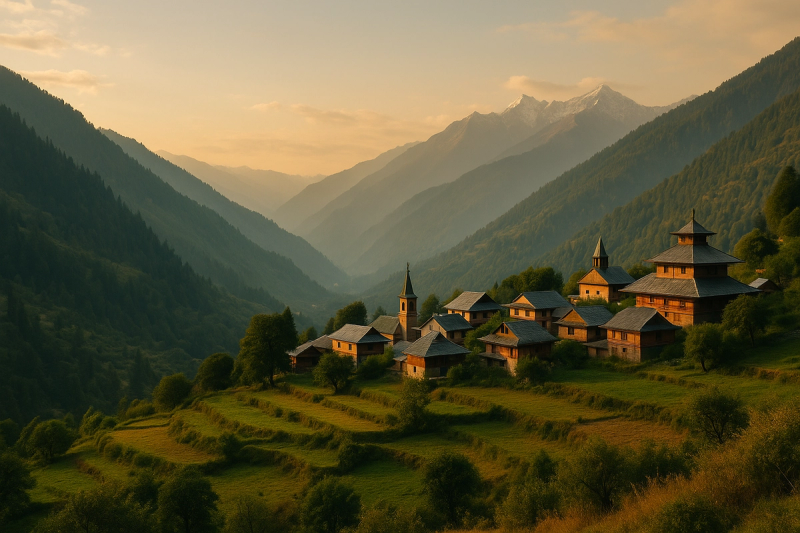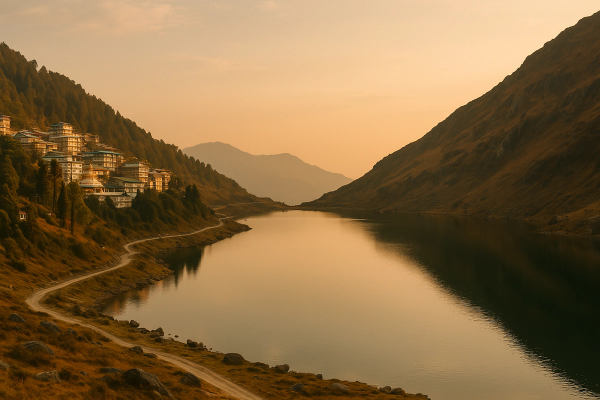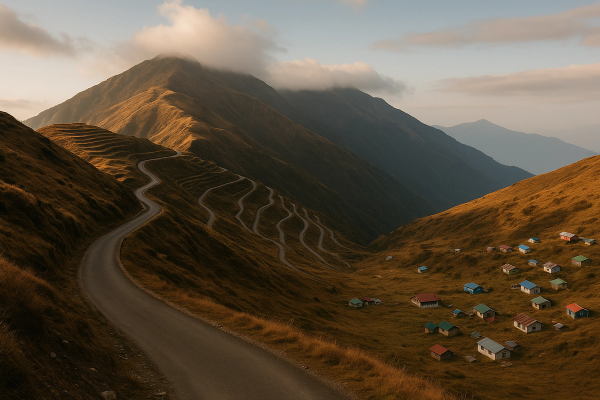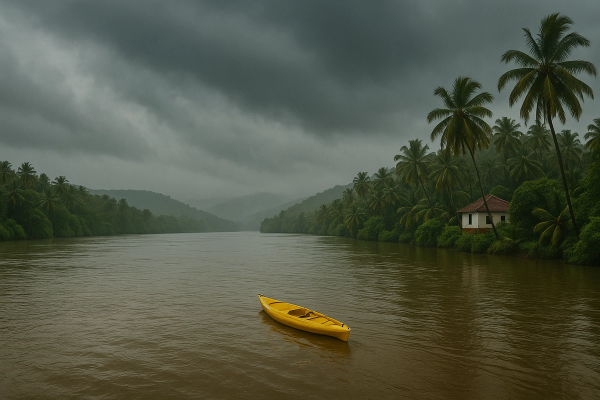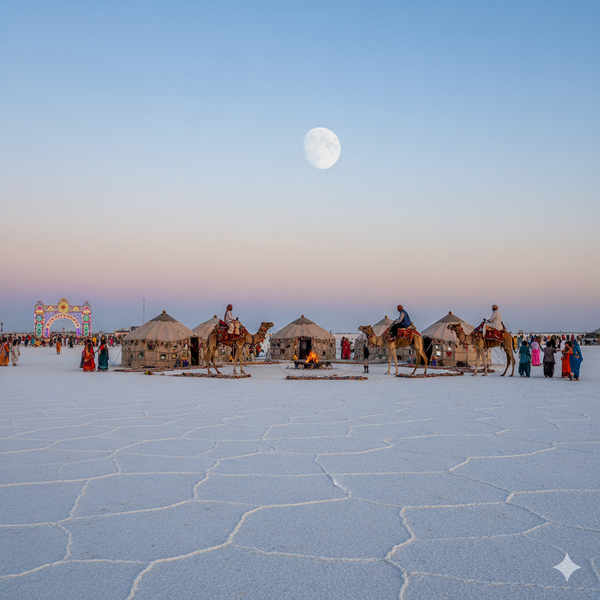Thachi vs Pangi Valley: Offbeat Himachal Travel Guide — a very desi, slightly messy, totally honest take#
Choosing between Thachi and Pangi is like choosing between two kinds of mountain feels — one is the lazy pahadi afternoon where you linger over chai, the other is that wild adrenaline when the road drops into a canyon and your heart goes full dhak-dhak. This guide is the kind of thing I'd send to my cousin in Chandigarh when he asks, “bhai, Thachi karu ya Pangi?” It’s personal-ish, pulled from local chats with homestay folks, drivers, HRTC conductors, and those road-side dhaba uncles who’ve seen monsoons come and go. Not a textbook, not perfect, and defo not generic. Just the real stuff you need, plus the tiny tricks that save your trip when, you know, signal dies and breakfast arrives late and you forgot your rain cover again...¶
Quick vibe check: what each place feels like (no boring lecture, promise)#
- Thachi Valley — soft hills, pine and deodar, slow rhythms. It sits around 1,900–2,000 m in the Seraj region of Mandi district, above Balichowki side. Easy access, mellow tea shops, apple orchards, small hikes that sneak up on you. Weekends can get a bit busy with Himachal & Chandigarh crowd, but still feels sleepy if you step off the main road.
- Pangi Valley — raw, dramatic, and properly remote in Chamba district. Killar is the main hub (around 2,600 m), and getting there is half the story: Sach Pass at ~4,420 m, cliff-hanger roads, Chenab roaring below. Less polished tourism, more offbeat explorer vibes. Think scarce network, long drives, breathtaking meadows like Sural or Hudan Bhatori... and dhabas that serve rajma chawal you’ll talk about for months.
Getting there right now: routes, buses, and those road updates people never tell you till you’re stuck#
Thachi first. Easiest way is Mandi → Ner Chowk → Padhar → Gohar → Balichowki → Thachi. HRTC buses run Mandi–Balichowki frequently, and you’ll find shared Boleros or local taxis doing the last stretch to Thachi. Typical bus fare won’t break anything — under a few hundred rupees — and a taxi Balichowki–Thachi is usually 600–1,200 depending on time and mood (rates change, monsoon, wedding season, everything affects it, you know). Road conditions? Generally decent. Blacktopped in most parts, but expect random patches with stones and small landslides around peak monsoon. Night driving is fine-ish here compared to Pangi, but don’t overspeed — hairpins plus mist plus stray cows equals drama. If you’re coming via Tirthan or Janjehli, locals do a pretty chill loop, but always ask for the latest “saab, road khula hai?” update in Balichowki before you push on.
Now Pangi. There are three classic approaches and they all feel epic:
- Chamba → Tissa → Bairagarh → Sach Pass → Killar. This is the famous one. Sach Pass typically opens July to early/mid October after snow clearance. Distance-wise it’s a full day. 10–12 hours is normal if roads behave.
- Lahaul side → Udaipur → Tindi → Killar. Slightly longer window than Sach because the route sits lower. People use it June to October-ish, but verify locally — snow and slides change everything.
- Kishtwar (J&K) → Killar via the cliffhanger road. Adventure riders know this. It’s stunning and… intimidating. Narrow, broken surfaces, no guardrails in many sections. Do not attempt sans experienced driver or proper prep. Period.
HRTC does run seasonal buses into Pangi once passes open. Timings can be painfully early and limited seats. If you’re self-driving, keep extra fuel. Reliable petrol pumps are outside Pangi — Bairagarh/Tissa side in Chamba district and Tandi/Udaipur side in Lahaul. New pumps get discussed, but “petrol mil jayega na?” should be a question you ask at every tea shop. Also, keep a paper copy of your ID and carry cash. Road closures after fresh snowfall are sudden, and even in shoulder season a single slide near Purthi or Saach can hold you up for hours.¶
Where to stay and how much you’ll end up paying (rough, but real)#
Thachi has proper homestay culture now — registered stays under the Himachal Homestay scheme, plus small guest houses sprinkled along the ridge. You’ll find wooden rooms, sunny balconies, and food straight from the kitchen garden. Typical price range: ₹800–₹1,500 per night for a basic room. Meals are often home-style thalis, around ₹150–₹300 per person. On a busy weekend, some places quote more, especially if there’s a nice view deck or they add bonfire and snug quilts. If you want that meadow camp vibe, do it with a local guide — permissions may be informal, but we don’t want angry villagers or forest folks, haan na.¶
Pangi has fewer, more spread out options. In Killar you’ll get simple hotels and homestays; look out for PWD or Forest Rest Houses (FRH) in Purthi, Sural, Dharwas etc — bookings are old-school (call, request, or ask locally). Prices vary: ₹1,000–₹2,500 for a decent homestay room; basic hotels in Killar land around ₹1,200–₹2,000 depending on season. Electricity cuts happen. Hot water is sometimes bucket-and-rod style. Don’t expect Instagrammable lobbies. Expect warmth, rajma, and sincere hosts. If you go deeper into Sural Bhatori or Hudan side, carry sleeping liner and snacks — accomodation isn’t guaranteed every night unless pre-arranged.¶
Best months to visit (and honestly, when to avoid)#
Thachi works almost year-round. Spring (March–May) is a dream — rhododendron, fresh grass, mornings that smell like pine. Monsoon (July–August) is very green but slippery. Autumn (September–November) has clear mountain views with fewer leeches and less drama. Winter (December–February) sees occasional snow — not crazy like upper Kullu, but enough to give you white mornings, road closures for a day or two if a heavy spell hits. If apples matter to you, late August to September brings harvest in the region.
Pangi’s season is shorter. Best window is roughly July to September when Sach Pass opens and meadows are alive. Early October can be golden but risky — first snow can close the pass overnight. The Udaipur–Killar side stretches the season a bit, but don’t bank on late October without checking day-by-day reports. Winter is a no-go for most travelers. Local festivals like Halda happen in the deep winter (Jan-ish, dates vary), but that’s a lived-in valley affair, not a tourist calendar. As of 2025, road maintenance crews have been a bit quicker after slides, but weather remains the boss up there.¶
Food, culture, and those tiny joys that actually make a trip feel like home#
Thachi plates up the classic Himachali comfort: siddu (steamed wheat bun stuffed with earthy fillings), sepu badi, madra with curd-based gravy, khatta that’s tangy, and babru for breakfast if you’re lucky. Tea is a lifestyle, not a drink. Orchard produce shows up in the most random ways — apple chutney, jams, and that special ghee-soaked paratha your host insists you must try. Villages here are Seraj side, and you’ll hear a mix of Hindi and pahadi. Dham (the traditional feast) isn’t a daily thing, but if you catch a wedding or local festival, don’t miss it.
Pangi food is more rugged, simple, filling. Chilra — a thin fermented pancake — is common, with ghee and chookh (fiery chutney) that’ll wake you up. Rajma is everywhere, but Pangi rajma has this clean flavour that probably comes from the water and the altitude. Meat curries show up often if you ask. You might bump into Chamba-style dham during melas, with madra, kaale chane, and that tangy khatta variation. Tea stalls double as news centers. Carry trail snacks — peanuts, chikki, the usual — because in Hudan or Sural you won’t just spot fancy cafes. And yeah, the hospitality is old-school Himachali. Straight. Unpretentious. Kind.¶
What to actually do in Thachi (no over-planning, just vibes)#
- Walk at dawn through pine and deodar. No destination, just a slow loop till your knees say bas.
- Ask your host for a meadow hike above the village. Locals use names like Thachi Top, Halda Ground, or the ridge behind Nagini Mata — naming varies by hamlet, but the meadows are the point.
- Day trip to Gada Gushaini or towards the Tirthan side for riverside lazing. Take a bus one way, hitch a ride back.
- If you’re keen, the Seraj trails connect towards Shikari Devi area. Go only with a local guide. Weather flips fast.
- Just sit. Seriously. Watch orchard life happen at its slow pace — that’s kind of the reason people fall for Thachi.
What to actually do in Pangi (more planning, more wow)#
- Sural Bhatori meadows — big skies, broad valleys, and streams that look painted. Stay a night if you can arrange a room.
- Hudan Bhatori side — glacial valley vibe, fewer people. Some trails feel lonely in a good way. Check route locally.
- Purthi Forest Rest House area — walk along the Chenab, easy trails, bird calls. Very no-fuss pockets of calm.
- Sach Pass viewpoint — if the pass is open. Start early from Killar to avoid rush and melting snow. Carry gloves even in August.
- Mindhal/Mindhal Mata temple and old wooden architecture — ask in Killar, as dates and access can vary. Small fairs pop up around late summer.
- Kishtwar–Killar cliffhanger viewpoints — only if you’re not the one driving. Photographers freak out here, but road safety first, selfies second.
Safety, permits, and connectivity — the real talk nobody glamorizes#
Permits: Indians generally don’t need special permits for either Thachi or Pangi. Foreign nationals should check recent rules and may need to register at local police or check posts, especially around Pangi corridors. Always carry ID.
Connectivity: Thachi gets decent Jio/Airtel in most village clusters, with WFH folks now sneaking in weekday trips. Pangi is patchy. Jio/BSNL work around Killar, then drop off hard once you turn towards Hudan or Sural. Download maps offline. Keep power banks. Don’t depend on UPI in deep valley; carry cash. ATMs exist in Killar but can be out of cash randomly. In Thachi, ATMs are easier around Balichowki/Gohar.
Road safety: In Thachi, watch out for monsoon landslides, cows, and stray construction. In Pangi, leave with sunrise, arrive before dark. Woolen gloves even in summer for Sach top because cold steering wheel is a thing. No driving after fresh rain on cliffhanger sections. If you’re hiring a cab, Bolero/Scorpio drivers who regularly run these routes are gold — typical day rates on the Pangi side are ₹3,500–₹5,500 plus food and stay for driver. In Thachi, a local taxi for runs between Balichowki–Thachi or meadow trailheads can be ₹800–₹2,000 depending on km. And please, don’t pressure drivers to overspeed. Landslides don’t care about your Instagram schedule.
Health and altitude: Thachi is mid-altitude; pace yourself if you’re new to hills. Pangi sits higher. Hydrate, eat light the first day, and save intense hikes for day two. Carry a small med kit. Weather turns wierd fast.¶
Itineraries and rough budgets (so you can actually plan without twenty tabs open)#
Thachi 3D/2N chill plan:
- Day 1: Mandi → Thachi via Balichowki. Check-in. Slow village walk, sunset chai. Dinner homestyle.
- Day 2: Meadow hike above Thachi. Late lunch. Optional run to Gada Gushaini or a waterfall in the Seraj belt. Bonfire if it’s dry.
- Day 3: Orchard morning, temple visit if there’s one nearby, bus or taxi back.
Budget rough: Bus Mandi–Balichowki ₹150–₹250; local taxi both ways and hills running ₹1,200–₹2,500 total; stay ₹800–₹1,500 per night; food ₹200–₹500 per day. Two people for two nights lands around ₹5,500–₹8,500 depending on transport choices.
Pangi 5D/4N explorer plan:
- Day 1: Chamba → Bairagarh. Night halt (safer before Sach).
- Day 2: Bairagarh → Sach Pass → Killar. Lunch break somewhere neat. Evening in Killar.
- Day 3: Sural Bhatori day hike or overnight if room available.
- Day 4: Purthi forest side, slow trails, return to Killar.
- Day 5: Exit via Udaipur–Tindi if open, or back over Sach if the weather allows.
Budget rough: Seasonal HRTC bus Chamba–Killar varies; if you hire a cab, expect ₹3,500–₹5,500 per day plus fuel and driver expenses. Stay ₹1,000–₹2,500 per night; food ₹250–₹600 per day. Total for two people over four nights easily ₹20k–₹35k depending on cab v/s bus and route choices. Remember extra fuel, snacks, and an emergency buffer, because slides and detours aren’t rare.¶
Which one should you pick? My biased, desi-heart answer#
If you want cozy, tea-fueled days, easy buses, and gentle walks where even your nani would be comfy — Thachi. Go there when you need a reset without a logistical headache. If you crave that high, the goosebumps of cliff roads, and a valley that still feels mostly for locals — Pangi. Go there when you’re okay with discomfort and you want your trip to be a story. Both are Himachal, both are welcoming, both can surprise you. And honestly, mixing them on two separate trips is the sweet spot. Do Thachi when work is crazy and you want soft hills. Do Pangi when life feels steady and you can handle a bit of chaos. You’ll thank yourself later.¶
FAQs in plain words (I hate stiff answers)#
- Is it safe for solo women? Thachi — generally yes, lots of families and homestays. Pangi — yes but plan more, stick to daylight travel, pre-book stays.
- Do I need permits? Indians — not usually. Foreigners — check with local police at Killar, carry passport, sometimes registration is asked.
- ATMs and UPI? Thachi — UPI mostly fine, ATMs around Balichowki/Gohar. Pangi — carry cash; Killar ATMs exist but don’t depend on them.
- Winter trips? Thachi — possible with occasional snow days. Pangi — no, unless you’re local or on official work. Passes close.
- Network? Thachi — Jio/Airtel workable. Pangi — Jio/BSNL around Killar, dead zones elsewhere. Offline maps please.
Final travel thoughts (and a tiny request)#
There’s no one-size-fit-all hill trip. Thachi is that calm breath you take. Pangi is the big exhale when you realize how tiny everything feels next to the Chenab and those carved roads. Whatever you pick, go soft on the mountains, leave no trash, and tip your hosts when the tea arrives a bit late because they were feeding the cow first. If you want more desi-style guides like this — chatty, slightly imperfect, actually helpful — check out AllBlogs.in. That’s where I dump my hill notes without trying to sound fancy. Happy roaming, yaar.¶

